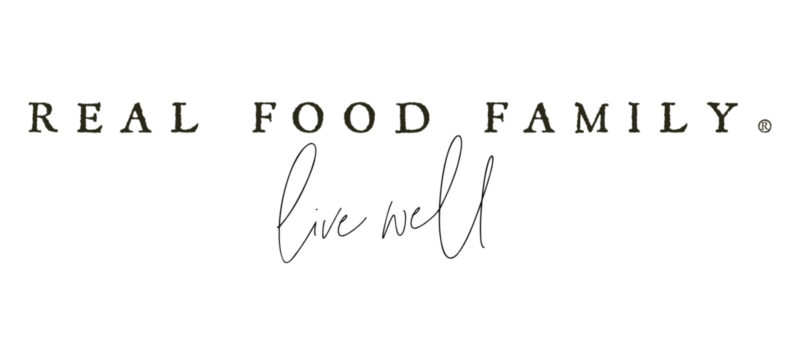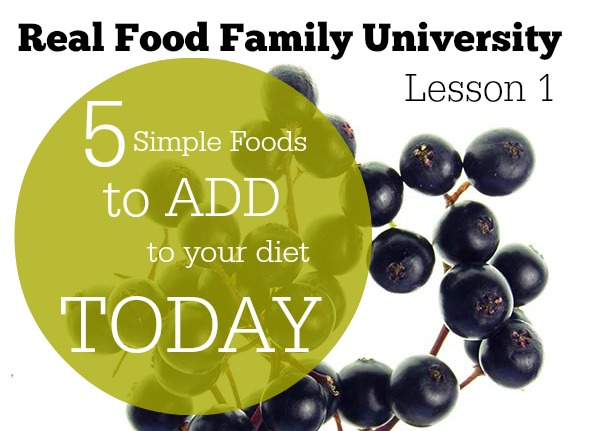Welcome to Lesson 1 of Real Food Family® University: 5 Simple Foods to ADD Today!
In case you missed the Introduction to this series, make sure to check it out to get the motivation you need to stick with a new real food and natural living lifestyle.
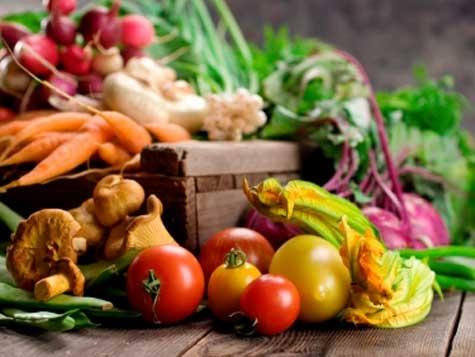
It is very easy for us to look at our lives and diets and put a finger on all the “bad” stuff: parenting mistakes, junk food, skipping the gym (…for like the past 5 years), etc.. Typically “diets” (as in special programs from Weight Watchers to Paleo) focus so much on what you are supposed to eliminate that you fall off the wagon sooner or later because you can’t figure out what the heck to eat, not to mention you feel being of the “good things” in life because you’re focused on missing all the foods that made you happy!
I think the easiest way to start a new real food and natural living lifestyle is to focus on the super delicious and exciting things to ADD to your life! Even though cutting out seriously unhealthy food is important, it’s equally important not to get in the mindset of believing food is “bad”. I think this leads to all sorts of psychological issues with food, such as eating “bad” food to feed depression or punish yourself- like eating a quart of chocolate ice cream after a break-up. It’s as if you’re saying “my life sucks, so I’ll just make it suck more by punishing my body with ‘bad’ food”. Chocolate ice cream should be associated with good days and savored during a celebratory part of life!
I could try to elaborate on this point a bit more, but I truly believe that our culture has too much of a negative view of food in general (this food is fattening, this food is bad for the heart, this food is bad for the brain, this food is bad for the environment, you should not eat this, you should not eat that, this food will kill you, etc.) that we’ve forgotten what it’s like to fully enjoy food that nourishes our bodies and comforts our souls.
My point is: let me help you fall in love with healthy food instead of making you feel like you’ve been poisoning your family with “bad” food this whole time. (I’ll save that guilt for a later post in this series- hah! Just kidding…sort of.)
Here is a list of 5 foods to add to your family’s diet TODAY (or this week) that are the perfect first steps to a real food and natural living lifestyle. These foods are all “level 1”, which means they don’t involve special preparations like fermenting or soaking, or specialty markets, farm co-ops or online purchases for things like kombucha scobies, cultures, etc.. We will get into those “advanced” foods later in this series. For now, let’s keep it simple.
1. Homemade Chicken and Vegetable Stock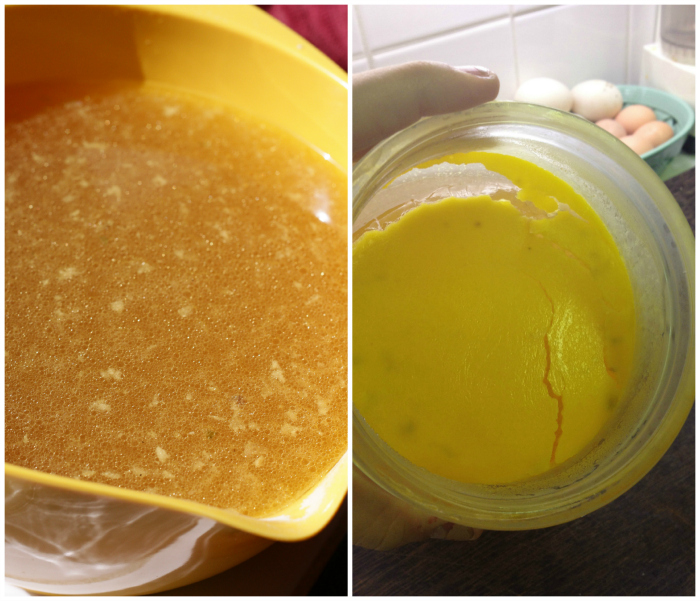
“Good broth will resurrect the dead,” says a South American proverb. When made properly- with all the bones and organs- a good meat stock is full of minerals and soothing gelatin. Every home, I repeat, every home should frequently have a pot of homemade chicken and vegetable soup brewing in the kitchen. Slowly made stocks are one of the leading traditional foods we can nourish ourselves with. Stock making, like many traditional food preparations, is becoming a lost art. Homemade soup stocks have been replaced by meat-mimicking monosodium glutamate and hydrolyzed vegetable protein soup mixes. It isn’t just a myth that good chicken soup will make you feel better. To learn more about the benefits of homemade stock, visit my recipe and video post here.
2. Butter and Coconut Oil
Still think butter and coconut oil are “bad” saturated fats? Besides the fact that saturated fat is actually good for you, there is a health benefit to eating copious amounts of real fats like butter and coconut oil. Butter substitutes, margarines and highly processed vegetable oils are not food products that I consider “real food”. Besides, butter tastes better!

Butter contains high amounts of important fat-soluble vitamins like A and D, as well as anti-oxidants and essential fatty acids. Learn more about the health benefits of butter here. Because of its nutrient density, rich yellow butter from grass-fed cows (not cheap, white butter from sick commercial cows) can actually be considered a “superfood”.
Coconut oil is gaining much popularity these days as an extremely beneficial fat. It is a great source of lauric acid and has antimicrobial benefits. Learn more about the research studies and health benefits of coconut oil here.
Both butter and coconut oil are stable fats, appropriate for cooking and high levels of heat. Polyunsaturated fats like vegetable oils should never be used for cooking and high levels of heat since the fat molecules become oxidized, which is the true cause of problems like “clogged” arteries and inflammation. Learn all about the myths and truths of dietary fat here.
What butter and coconut oil should I buy?
- I buy either raw, cultured butter from a small farmer I trust, or I buy Kerrygold Irish butter which is labeled as “grass fed” and is a beautiful yellow color.
- Ghee is also a fantastic option for butter. I like Pure Indian Foods’ Ghee products the most.
- I buy Trader Joe’s organic virgin coconut oil, but you can also try this organic coconut oil that is decently priced.
3. Whole Milk Dairy…maybe even RAW.
Okay, forget the whole “raw” thing for a minute…we’ll get back to that. Let’s start with DAIRY! Some people think all humans should’t eat dairy products. I think some humans shouldn’t eat dairy products, but those people typically know who they are because they have an allergy or obvious digestive problems when they consume dairy. For most people drinking milk and consuming dairy products can be very healthy. As I already mentioned, BUTTER is a health food, and I think cheese, cream, yogurt, kefir and real milk are not only nutrient-dense foods, but make life simply wonderful. (I’m dreaming of cheese fondue and sweet custard tarts in buttery pastry right about now.)
If you consume dairy, you most likely try to buy low-fat or non-fat products believing they are the healthier option. Sadly, this is entirely untrue. It all comes from the myth that dietary fat leads to a fat, unhealthy body…particularly fat from animals. Two paragraphs ago I gave you a link to learn more about the myths and truths of dietary fat. Here’s that link again.
Studies specifically show that low-fat dairy products are linked to HIGHER incidence of excess weight and obesity, while high dairy fat intake is continually linked to lower body fat and a LOWER incidence of excess weight and obesity, as well as LOWER chance of cardiovascular problems. Here are some studies to check out:
- High Dairy Fat Intake Related to Less Central Obesity
- High-fat dairy consumption within typical dietary patterns is inversely associated with obesity risk
- In adolescents, dietary calcium and skim and 1% milk were associated with weight gain, but dairy fat was not
- Whole fat milk linked to lower body mass index versus reduced fat milk in preschool-aged children
- Lower-fat milk associated with higher body mass index, Full fat milk associated with lower body mass index in children
Not convinced yet? Try reading this post from The Healthy Home Economist: Why Skim milk Will Make You Fat and Give You Heart Disease
So what YOU need to do TODAY is start buying whole fat dairy foods and believe that they are the healthier option and not an “indulgence” that you need to consume in “moderation”. That is mythical thinking. In fact, the fat in dairy will satisfy and nourish your body, keeping you fuller longer. Eating more fat will satisfy your adrenal glands, too, so you won’t be craving sugar so much.
Say goodbye to your days of buying skim milk and ordering skinny cappuccinos! You’ll never look back and you’ll feel really sorry for the people still reaching for the non-fat milk and yogurt and stuff…and don’t get me started on the low-fat cheese! (Sorry folks, that’s not really cheese.)
*At most coffee shops you need to ask for whole milk or they’ll automatically give you 2%- particularly Starbucks.
What kind of milk should I buy?
Unfortunately the commercial dairy industry is absolutely, positively horrid, unethical and disgusting. I don’t recommend buying cheap, commercial milk (which makes up most of what is available in the grocery store). It’s just not fair to your health or the cow it came from. The cheaper the milk, the more likely the cow was pumped with hormones and antibiotics- which are all in your milk (and dairy products). Not only that, but the poor animal lived a life of confinement and unsanitary filth.
Please make the choice to buy organic dairy from grass-fed cows if you can. You could even go through the effort of looking up the farm you’re buying your dairy from.
I also mentioned I’d go into the idea of choosing RAW dairy. In our home, we try to only drink raw milk and consume raw dairy foods from strictly grass-fed cows and clean, reliable farms. Raw milk has not been pasteurized or processed. Raw milk is completely safe when it comes from exclusively grass-fed cows and is handled properly. The reason raw milk is so much better is because the heat processing from pasteurization and homogenization hasn’t burned up the natural enzymes and vitamins in the milk, which the body needs to properly digest and absorb nutrients. Many people with “lactose intolerance” have no problems consuming raw dairy. Some people and parents of children with neurological issues even claim that raw milk significantly helps with their symptoms. You can learn more about raw milk at www.realmilk.com, as well as find safe and reliable sources of raw milk near you. Raw milk is dramatically higher in price than regular milk, but you get what you pay for!
4. Organic, Pasture-Raised Eggs
Eggs are one of the most perfect foods to eat! The whites are full of protein and the yolks are packed with important nutrients. Egg yolks contain high levels of biotin, choline, folate, protein (particularly methionine- an essential protein for fetal development), and healthy cholesterol (source). Eggs are a very fulfilling food and come at a fantastic price for the amount of nutrition they offer…even the expensive eggs.
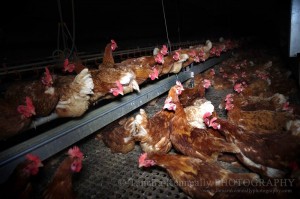
Not every egg is the same, though. The commercial egg industry is horrific. Commercial egg farms are an ethical disgrace. We, as humans, should be utterly ashamed of the way we raise egg-laying hens for profit. Typically commercial eggs come from hens fed with a mixture of GMO corn and soy protein, plus a myriad of synthetic additives and medications to control the extensive amounts of illnesses these types of hens tend to have. In other words:
Cheap Eggs = Sick Hens + Bad Feed + Bad Nutrition + More Pathogens (chance of illness and disease)
When you have a selection of eggs in the market and one carton is $0.99 and another carton is over $4.00, chances are you don’t even think about it and go for the $0.99 one. Maybe you already try to buy “better” eggs but are totally confused by all the different options available like “cage free”, “free range”, “all natural”, “organic”, “vegetarian fed” or “pasture raised”. What does it all mean?!
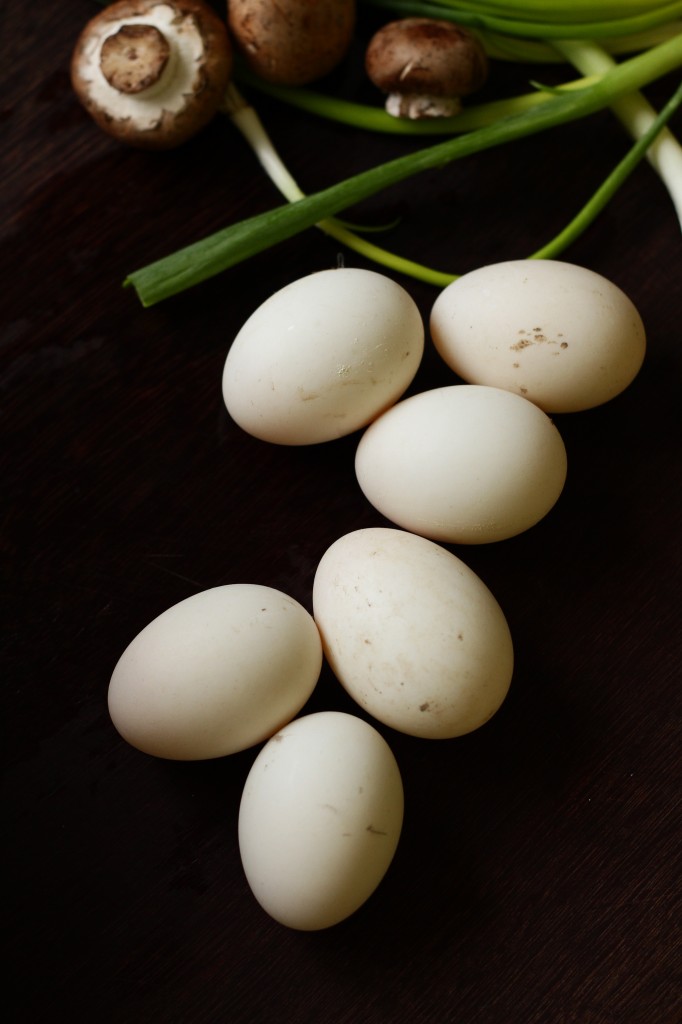
Most of this jargon is exactly that: jargon created by the marketing companies that don’t exactly mean much. “All natural” means pretty much nothing. “Cage free” and “free range” means the chickens were not raised in cages but most likely they were raised in large poultry tents crammed in with thousands of birds, living in their own poop, still consuming GMO, medicated food. “Organic” means they were fed organic, non-GMO food with no medications, which is better. “Vegetarian fed” means they weren’t fed food with animal byproducts, which is good, although chickens aren’t supposed to be vegetarian, they should be thriving on bugs in a pasture.
The best kind of eggs to get are PASTURE-RAISED EGGS, meaning the hens were raised on actual pasture land. It would be best if these pasture-raised eggs were supplemented with organic soy-free feed, too, so you should look for “organic, soy-free, pasture-raised eggs”. You will get the most nutrition from these eggs and virtually no risk of any pathogen or disease. The difference is going to be the cost, but you can get a few meals out of a dozen eggs. Not many quality protein sources can compete with the price of “expensive” eggs, or the nutrition.
5. Organic Meat and Plant Foods, Wild Seafood
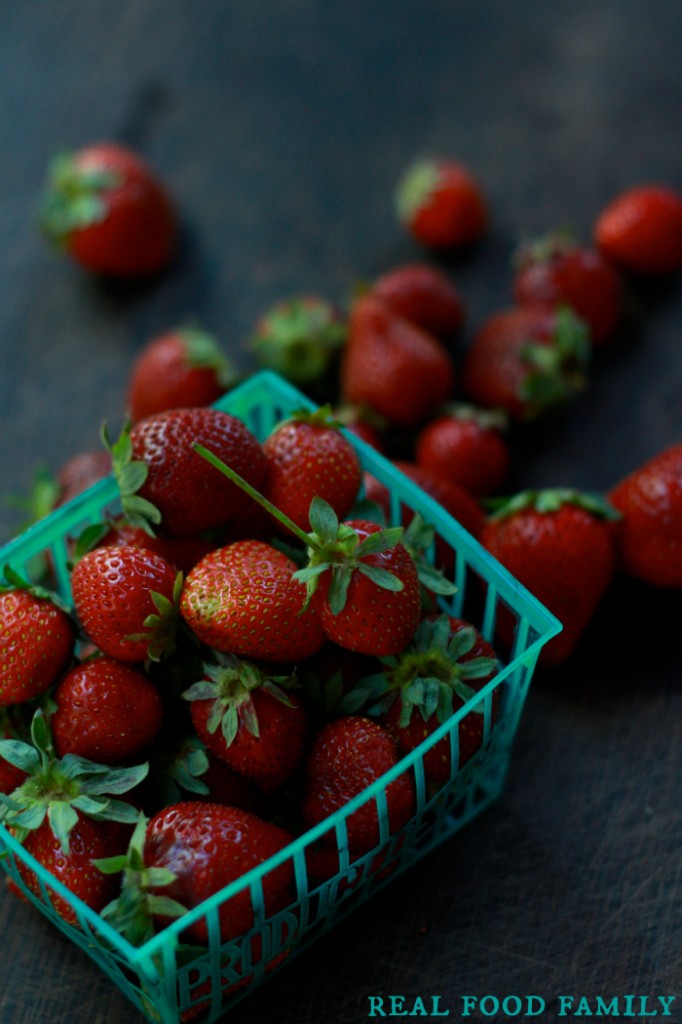
I would say that the vast majority of my family’s diet consists of quality organic meat, seafood and organic plant foods (besides the other items already listed). Actually, if you think about it, there aren’t many other foods to eat except processed chemical food “products”. Even if it means changing your budget a little bit, focusing on better quality food is essential for your family’s short term and long term health. It is so worth it to commit to buying and eating better food.
Organic meat (beef, chicken, lamb, pork, etc.) simply means the animal was fed exclusively organic feed, which means no genetically modified organisms (GMO’s), pesticides or herbicides, and usually no medications, hormones or antibiotics. Grass-fed and pasture raised meats are the best choice, but just committing to only buying organic meats is a great place to start. Organic plant foods (vegetables, fruits, grains, etc.) means they are non-GMO and raised with little to no use of chemical pesticides or herbicides. Wild seafood means it was collected from the wild and not from a factory fish/seafood farm.
I will discuss in greater detail the reason why you must avoid foods raised with chemicals and GMO’s in a later post. As promised, this post is all about the positive things to ADD to your family’s diet. I’ll give you a hint, though…eating better quality food is vastly better for your health and the life and health of the animal or land your food comes from.
Click here to purchase the best quality grass-fed and organic meat, poultry and seafood online. If you can find good local sources of organic meats, seafood and plant foods, please support your local farmers and suppliers!
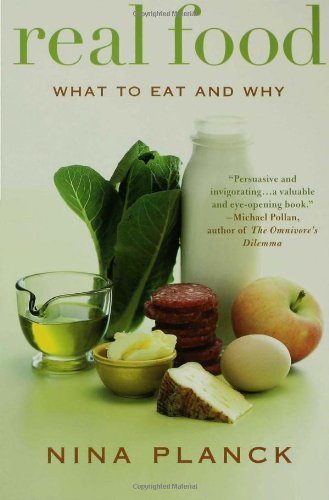
Final Note
If you are wanting to understand more about what the term “real food” means…at least in my terms, I cannot emphasize enough my recommendation for the book Real Food by Nina Planck. This was the first of many books that jump-started my journey into the dietary lifestyle I whole-heartedly follow and promote. I highly suggest reading this book if you never have! The more education you have in where your food comes from and why certain foods are better for you, the more motivation you will have to make better choices.
PS: Don’t forget to read my Real Food Family University Introduction, and make sure to check out the 10 Best Foods to Eat and the 10 Dumbest Foods to Eat.
